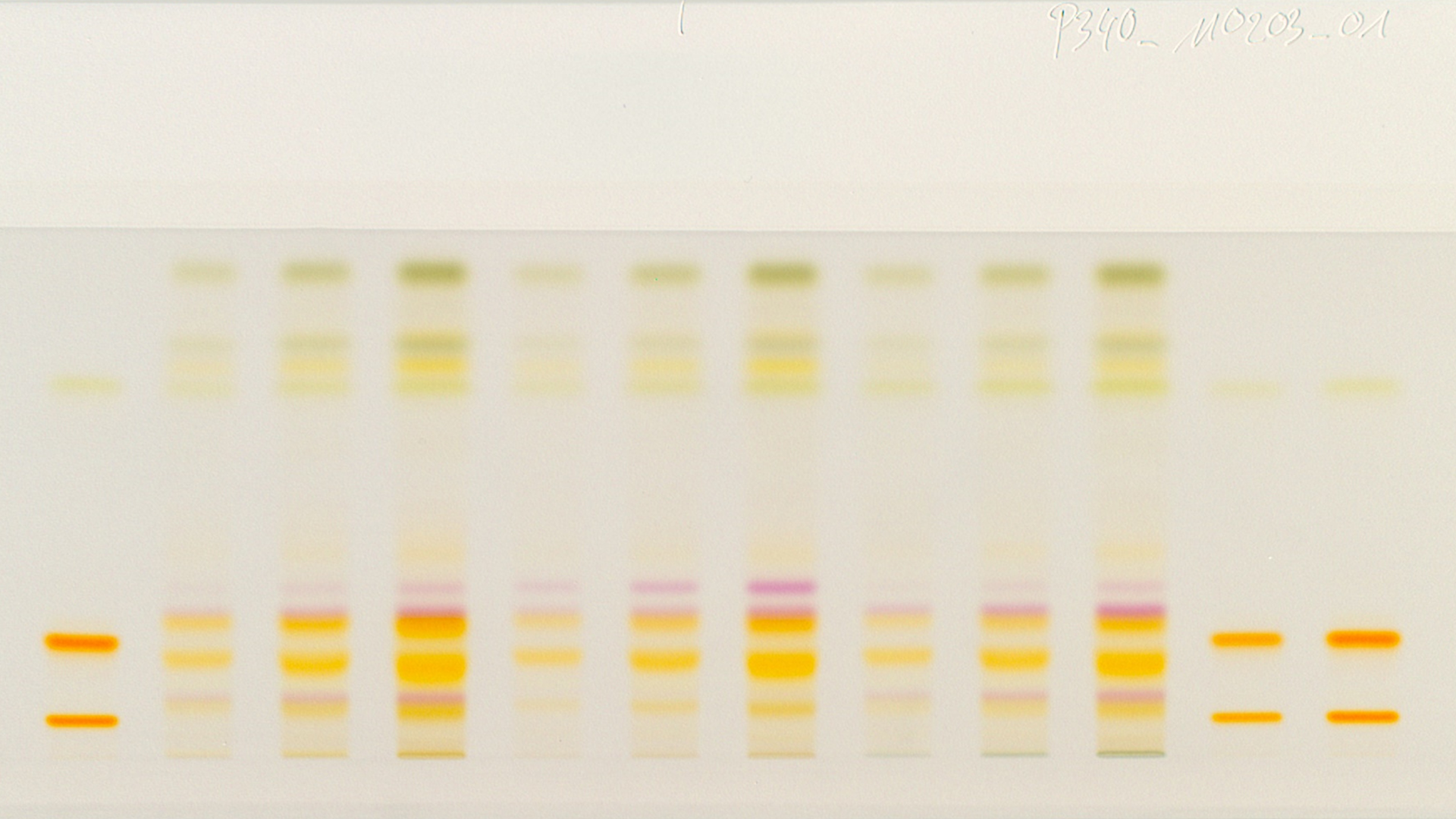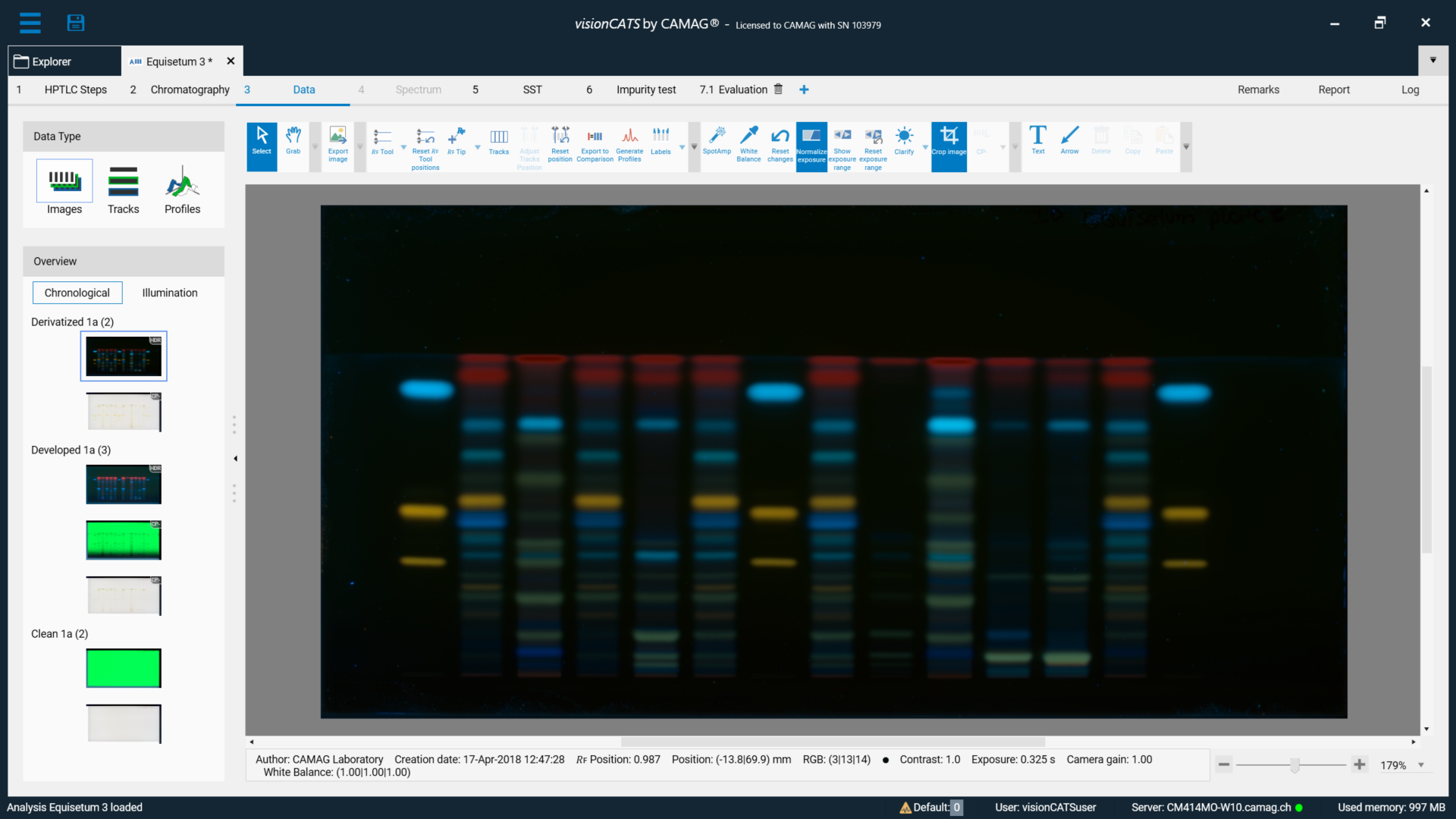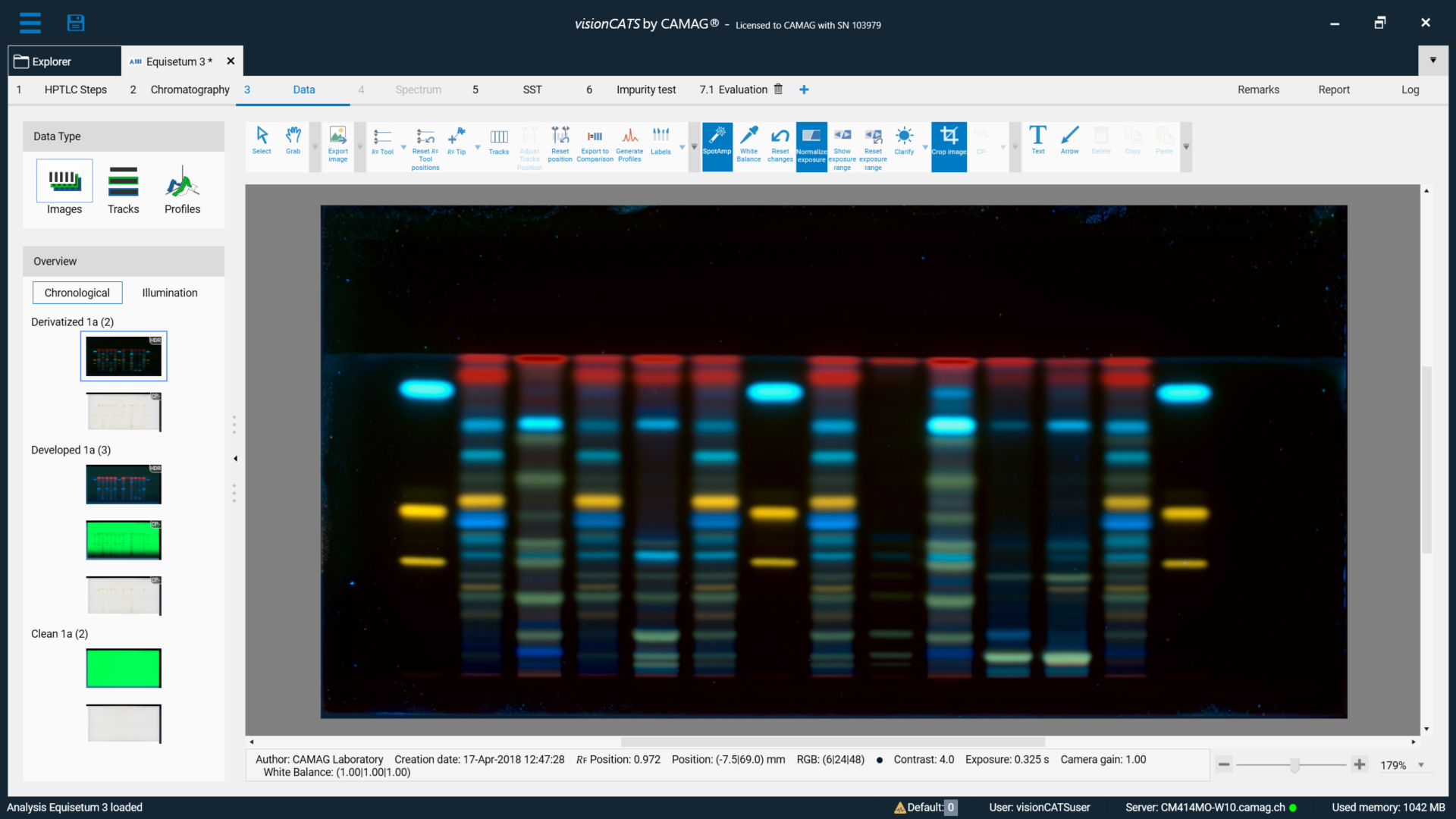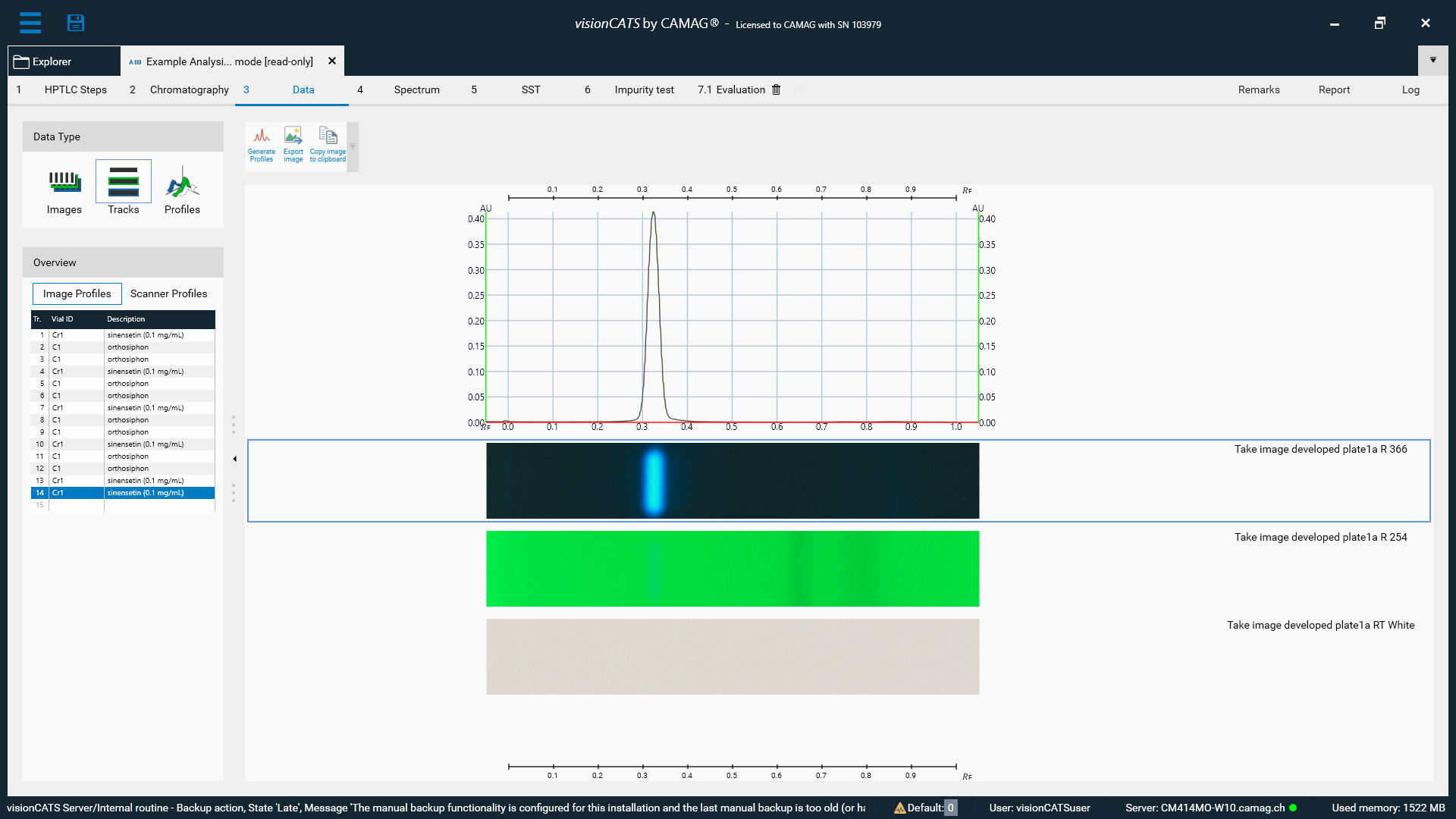CAMAG® HPTLC PRO Module DERIVATIZATION
HPTLC PRO
Module DERIVATIZATION
CAMAG® HPTLC PRO
Module Application
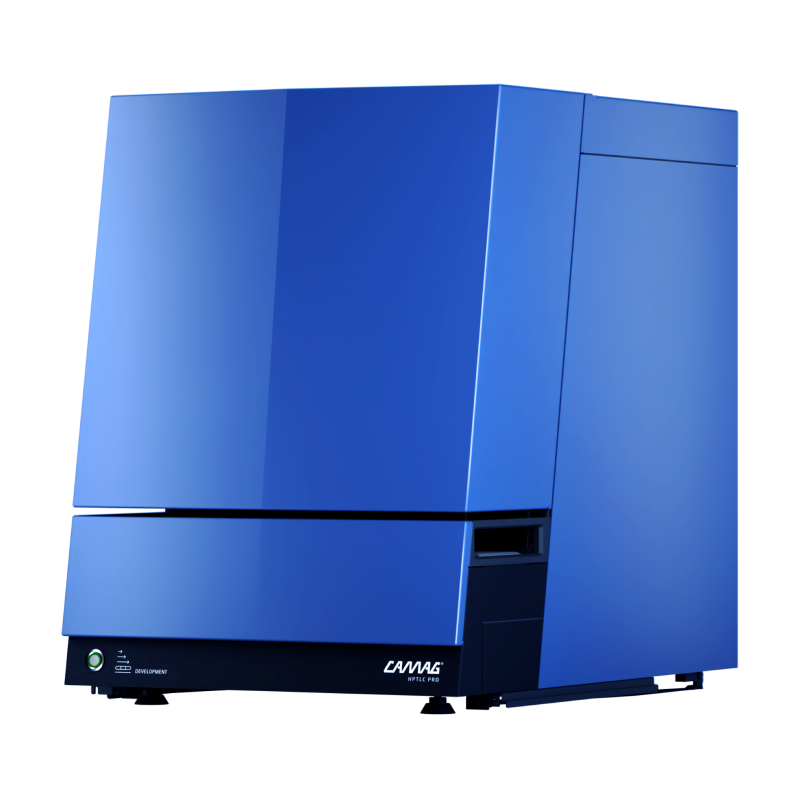
micro-droplet spraying and plate heating in a single device
[derivatization-large]The HPTLC PRO Module DERIVATIZATION is designed for the fully automatic derivatization of HPTLC glass plates (20 x 10 cm) and uniquely combines two steps in a single device: high-precision spraying of derivatization reagents and heating of the plate.
-
2
steps in one instrument -
4
different droplet sizes

Using patented micro-droplet spraying technology, the HPTLC PRO Module DERIVATIZATION achieves maximum uniformity in applying derivatization reagents, while the integrated plate heating unit ensures even heat distribution across the plate.
-
Part of the fully automated HPTLC PRO SYSTEM
-
Nozzle changer to choose nozzles from three parking positions
-
Integrated plate heating unit
-
Handling of two different derivatization reagents
-
HPTLC glass plates (20 x 10 cm)
-
Software-controlled by visionCATS
Stand-alone operation
With HPTLC PRO, users have the choice to either operate a module as stand-alone or together with other modules in a SYSTEM MODE.

SYSTEM MODE
SMOOTH & PRECISE OPERATION
-

01
The HPTLC PRO Module DERIVATIZATION features four spraying nozzles generating different droplet sizes to suit the properties of the selected reagent.
-

02
A sophisticated gripper mechanism inserts the nozzle into the nozzle adapter prior to spraying and subsequently moves it to the integrated cleaning station.
-

03
Employing the patented micro-droplet spraying technology, the reagent spraying nozzles generate an extremely fine reagent mist, which evenly distributes in the derivatization chamber and gradually settles down on the plate.
-

04
The cleaning station washes the nozzle from the inside and the outside. Meanwhile, the HPTLC plate is moved to the subsequent heating step.
KEY benefits
-
Spraying and heating in a single device
-
Highest user safety through automation and fume hood connection
-
Optimal cleaning procedure between nozzle changes
-
Low reagent consumption (3 mL)
-
Maximum homogeneity in reagent and heat distribution
Technical specifications
-
General data
-
Electrical data
-
Mechanical data






















